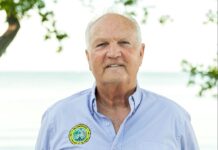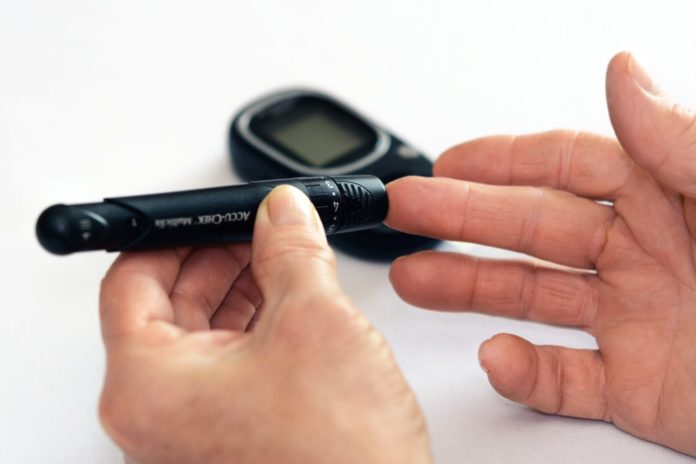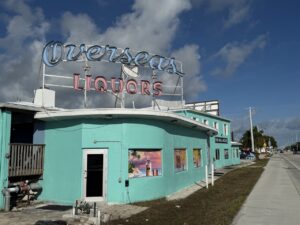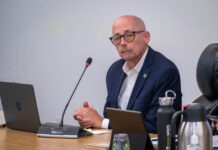The House of Representatives’ Committee on Oversight and Reform released a report in late June, detailing the inordinate cost of diabetes drugs for Americans — in particular, those living in the 26th Congressional District, including the Florida Keys. As the Democratic debates heated up last week in Miami, some candidates trumpeted “Medicare for all,” advocating for the program to be expanded to Americans under 65. Universal healthcare has been a notoriously sticky subject in Florida, and even for those who have private health insurance, Medicare or Medicaid, diabetes drugs can be incredibly costly.
More than 30 million people in the U.S. are living with diabetes, which means they rely on prescription drugs, including insulin, to keep their blood sugar levels in check. In 2017, according to the report, diabetes contributed to the death of 277,000 Americans and was the primary cause of death for 85,000 people.
The report details that 21,000 Medicare beneficiaries in the district have been diagnosed with diabetes, and the cost of common brand-name diabetes drugs in the district are up to four times as much as in other countries like the U.K. or Australia.
For uninsured patients, it’s worse. The report “finds that uninsured diabetes patients in the district who purchase Novolog Flexpen — a popular brand of insulin — pay on average 21 times more than they would in Australia, 14 times more than they would in the United Kingdom, and 12 times more than they would in Canada.” All of those developed nations have public health-care programs.
District 26 Rep. Debbie Mucarsel-Powell is introducing legislation that would allow Medicare to negotiate lower drug costs to allow less expensive generic alternatives to reach the marketplace.
“This report highlights how rising diabetes drug prices are depleting the health and finances of American families, patients, taxpayers and, disproportionately, communities of color,” said Mucarsel-Powell, “putting Americans at a financial disadvantage in the world’s richest country.”
Private pharmaceutical companies setting the market standards for drug costs is not a new story, but it’s nonetheless an urgent one — especially when it comes to the widespread health concern of diabetes and inordinate costs. The report states: “Over the past two decades, manufacturers have systematically and dramatically raised the prices of their insulin products by more than tenfold — often in lockstep. These prices dwarf manufacturing costs. One study found manufactures could charge as little as $7 to $11 per month for insulin and still make a profit.”
The cost create a financial strain not only for patients, but also for the federal government — which provides diabetes meds to 43 million Americans through Medicare — and thus taxpayers. The federal government has failed to pass legislation that would allow Medicare to negotiate directly with drug companies, so Medicare is paying top dollar. On the other hand, legislation dictates that the Department of Veterans Affairs must be given the lowest price that is offered to any buyer. In 2016, Medicare paid out over $20 million in the 26th district of Florida for diabetes medications.
Individuals in the Keys without insurance may have to pay over $600 a month for today’s most preferred type 2 diabetes drugs, said Dr. Gerald Ginsberg, the only practicing endocrinologist from Key West to Homestead. Ginsberg moved to the Keys to retire, but seeing the need for care, in particular for diabetes patients, he has continued to practice one to two days a week. Ginsberg cites newer classes of drugs, such as GLP1 agonists which came to market in 2005 and SGLT2 inhibitors, which came to market in 2013, that are effective with regard to lowing blood sugar, have minimal risk of hypoglycemia, and are associated with weight loss, lower blood pressure and better cardiovascular outcomes.
“These are great drugs,” he said, “but right now, doctors prescribe the lower cost generic drugs or the drugs that are available free of charge at Publix, because they are affordable for people without health insurance.” Metformin is often the first drug prescribed to all patients with type 2 diabetes and is one of the drugs available free of charge at Publix. But as the ability to make insulin deteriorates in the normal course of type 2 diabetes, patients generally require second and third drugs such as the GLP1 and SGLT2 medication classes. So, patients stick to what they can afford — which may not be the best medicine for their long-term care. Ginsberg doesn’t mince words about what he sees as a tragically flawed system:
“It’s always been like this,” he said. “We are the only democracy in the Western world that has a for-profit health care system, and that’s the bottom line. The drug companies are corporations that choose to develop products and charge whatever they decide they want to charge once the drug is approved. It’s awkward because nobody needs to buy a fancy car or needs to buy a big house, but people need to use insulin. Our government has allowed the development of this type of a health care system.”
While endocrinologists are hard to come by, there are some more affordable alternatives for diabetes care in the Keys. Ginsberg said that while management with medicine is part of the equation, “It’s what you eat every day; it’s how you take care of yourself; it’s if you can do what you’re being asked to do.” There are also facilities like Rural Health Network in Key West, which accepts Medicare, Medicaid, all private health insurance and offers care to uninsured patients on a sliding income scale. They offer a free nutrition class for friends, family, caretakers and patients with diabetes. They also connect patients with pharmacies through the 340B Drug Discount Program, which offers drug discounts at Walgreens and, newly, CVS and Publix.
“We do have a high demand in Monroe County,” said Vivian Roberts, a nurse and clinical coordinator for Rural Health Network. “You have a high cost of living, and fixed incomes, and it’s expensive to eat healthy.” However, they have seen improvements in patient health in recent years, testing returning patients’ A1C levels (% of hemoglobin attached to glucose in the blood) and consistently seeing improvements. “For our patient control here in Monroe County, we’ve seen a significant change because of the work that we do. When we compare nationally, we are doing really good.”
Roberts recommends coming in to get A1C levels checked, especially if someone has a family history of diabetes, so that they can engage in preventive lifestyle changes. The Rural Health Network is open Monday through Friday, 8 a.m. to 5 p.m., and they accept walk-ins.
While these community efforts help individuals and curb the severity of diabetes in Keys patients, they don’t address the problem of rising drug costs: for patients and taxpayers paying into the Medicare pot. According to Mucarsel-Powell, the key is in the hands of Congress.
“Unreasonably high insulin prices cause families to ration or stop taking diabetes drugs, putting their lives at risk,” she said. “Floridians cannot bear the economic burden of rising prescription drug costs, nor should they be asked to. Congress must allow Medicare to negotiate lower drug costs.”























